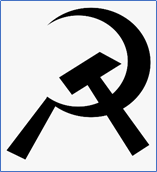The name of the representative at the provincial level is...
MLA (Member of the Legislative Assembly)
Name 3 provincial responsibilities.
(Answers may vary)
Drivers licenses, Ferries, Energy, Education, Highways, Healthcare*, Marriage*, Indigenous relations*, Natural Resources*
What is laissez-faire?
(Answers may vary)
Economic theory: a government should have little to no interference in economy. Businesses prosper and wealth trickles down to the lower classes.
What is self-governance?
A system in which people of a political unit or group rule themselves and control their own affairs.
What is Ms. Mui's favourite animal?
Cats
What is a minority government?
A government where the winning party won those most votes, but did not win half of the seats.
What is the difference between direct and representative democracy?
direct = every eligible citizen participated by voting on decisions
representative = citizens elect individuals to make decisions on their behalf
According to the Communist Manifesto, how is a classless society created?
The proletariat (workers) must overthrow the bourgeoisie (factory owners) in a violent revolution and seize the means of production.
What is happening in Wet'suwet'en territory and why is it an issue?
(Answers may vary)
Pipeline protest, band councils vs hereditary chiefs, RCMP roadblocks...
Name 3 things you can win from the Create Your Canada 2020 contest.
(Answers may vary)
Free trip to Ottawa, free hotel, tour of Parliament building, meet party leaders, sit in the Prime Minister's chair...
What are ridings and how are they determined?
A riding is a geographic area that an MP represents.
They are determined by population.
What is the difference between authoritarian and totalitarian governments?
(Answers may vary)
Authoritarian governments may allow some freedoms and tolerates other parties/groups
Totalitarian governments suppress all freedoms and control all areas of peoples' lives
What is one difference between socialism and communism?
Socialism: personal property may still be owned, people are "more equal" but class differences may still exist. Social programs are provided but with choice
Communism: all property is owned by government, a true classless society (everyone is equal). All social services are provided without choice
What are band councils and why were they an early issue in indigenous governance?
(Answers may vary)
band councils: groups of individuals who are elected by members of the indigenous Band. Usually have one Chief and several council members
Issues:
- band councils replaced traditional systems of inherited leadership
- band councils ignored diversity of indigenous systems
- any decisions by band councils had to be approved by the federal government
- federal government controlled voting and election process

What is this symbol? What does it represent?
Communist symbol of the hammer and sickle.
Represents workers (proletariat) rising up against the bourgeoisie (factory owners)
What are three factors or criteria to consider when forming a Cabinet?
(Hint: Think Justin Trudeau's Cabinet)
(Answers may vary)
gender representation, people of colour/visible minority representation, age range, competence/knowledge of Ministry, experience, provincial/territorial representation
How is a bill made into a law?
(Name the 4 steps and 3 structures involved).
4 step procedure:
Proposal, Debate, Committee, Vote
--
House of Commons, Senate, Governor-General
Name 1 example of a populist leader in the world. Give 2 reasons why they are populist.
(Answers may vary)
Name two policies from the Indian Act that imposed on the freedoms of Indigenous peoples.
(Answers may vary)
- Canadian government granted itself authority over indigenous affairs without consent
- All profits from Reserve farms and resources belonged to government
- Indigenous were pushed to become farmers
- potlatches banned (for a period of time)
- No right to lawyer regarding land claims